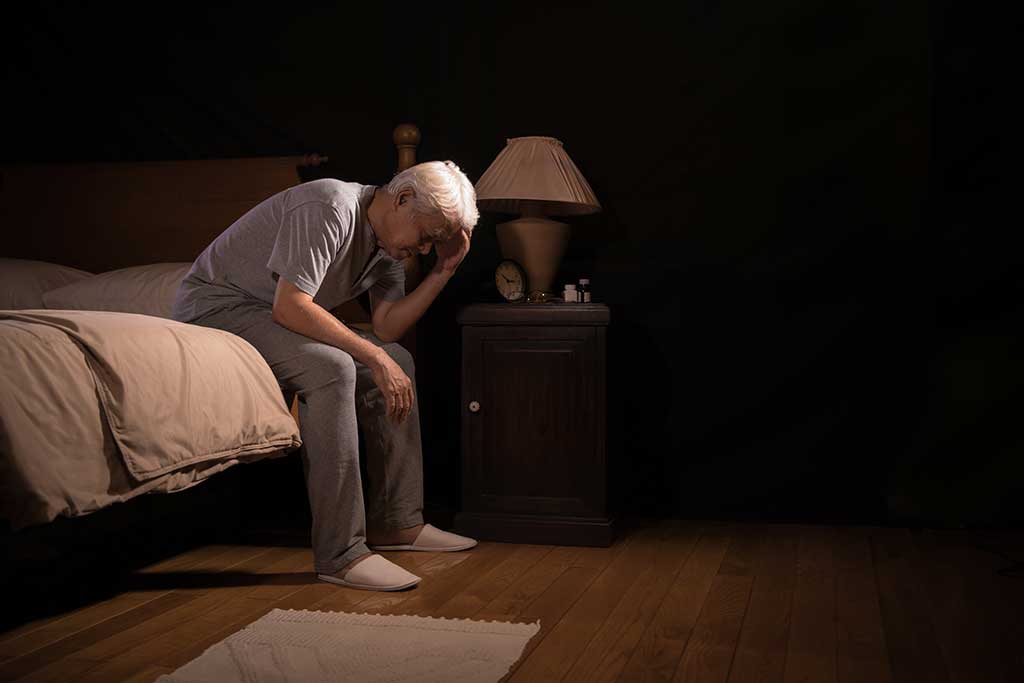
Restless legs syndrome (RLS) is a neurological disorder characterised by an urge to move the legs in response to unpleasant sensations like creeping, crawling, tingling, cramping or aching of the extremities. Symptoms vary between patients and range from uncomfortable to painful. RLS occurs mostly at night when lying down and lasts for a few minutes or an hour. This may lead to sleep deprivation, exhaustion and fatigue the next day. Getting up and moving around gives temporary relief.
RLS affects 5-15% of adults. Around 2-3% experience moderate to severe symptoms.
Prevalence of RLS increases with age (over 65 years have the highest prevalence). Women are more affected than men. Symptoms gradually worsen over time, but sometimes periodic spontaneous improvement can occur. RLS is hereditary in about 50% of cases. The cause can be idiopathic or secondary. Secondary causes of RLS may include iron deficiency, pregnancy, renal dialysis, smoking and obesity. Alcohol, caffeine, Parkinson’s disease, multiple sclerosis, diabetes and sleep deprivation can also be associated with RLS. Almost a quarter of pregnant women develop RLS symptoms mainly during the third trimester. This may be related to iron dilution due to an increase in total circulating blood volume. Symptoms usually disappear after delivery.
There is no specific test for RLS unless a secondary cause is suspected. Diagnosis is based on the patient’s description of symptoms and family history. Iron deficiency should be excluded. If serum ferritin level is below 75mcg/L, oral iron should be started. If this is not effective due to malabsorption or intolerance, intravenous iron should be considered.
Intermittent, mild symptoms can be managed by avoiding aggravating factors, engaging in moderate exercise (avoid intense exercise before bedtime), establishing good sleep hygiene and having a massage and warm bath prior to bedtime. Review patient’s medications and cease those that could be worsening RLS if appropriate e.g. antihistamines, metoclopramide, antidepressants.
Pharmacotherapy may be required if symptoms are bothersome and/or severe.
Medications used are:
Levodopa/benserazide 100mg/25mg to 200mg/50mg once daily at bedtime when needed
Levodopa/carbidopa 100mg/25mg to 200mg/50mg once daily at bedtime when needed.
Levodopa is reserved for intermittent use in people who do not require daily therapy.
Gabapentinoids (gabapentin and pregabalin) are useful when sleep disturbance, insomnia or an unrelated chronic pain syndrome are the main symptoms. Patients with renal impairment need the dose adjusted.
Gabapentin 100-300mg daily at night. Can gradually increase dose every 3-7 days as tolerated to a maximum of 2400mg. If dose is greater than 1200mg, one third should be taken in the evening and two thirds at bedtime.
Pregabalin 75mg once daily at night. Dose can be increased every 3-7 days as tolerated to a maximum 450mg daily.
Dopamine agonists are used in very severe RLS symptoms, comorbid obesity, metabolic syndrome, obstructive sleep apnoea and depression.
Pramipexole 0.125mg once daily 2-3 hours before bedtime. Gradually increase dose every 4-7 days to 0.25mg at night as tolerated to a maximum of 0.75mg daily.
Ropinirole 0.25mg once daily 1-3 hours before bedtime. Can increase after 2 days to 0.5mg daily for 5 days, then increase daily dose by 0.5mg every 7 days up to 4mg.
Rotigotine 1mg patch applied daily for 24 hours. Can increase dose if tolerated up to 3mg daily.
Reassure patients that common adverse drug effects like nausea and hypertension may subside after two weeks. For refractory RLS, combination therapy of gabapentinoid and dopamine agonist may be trialled. Benzodiazepines as an add on therapy for insomnia or low dose opioid is also beneficial.
Augmentation refers to an increase in RLS symptom severity with increased dose of medications. The symptoms occur at an earlier time during the day, is of greater intensity and may involve the arms. The risk of augmentation in patients taking dopaminergic drugs for long periods of time has led to gabapentinoids being preferred as first-line treatment for RLS. Refer to an expert if augmentation occurs.
References:
- Neurology Expert Group. Therapeutic Guidelines: Neurology. Version 5 Melbourne: Therapeutic Guidelines; 2017.
- Silber M. Treatment of restless legs syndrome and periodic limb movement disorder in adults. Wolters Kluwer: UpToDate; 2021.
- Verma N Kushida C. Restless Legs Syndrome. London: BMJ Best Practice; 2019.
Subscribe Knowledge Centre Updates
Enter your details to receive Knowledge Centre updates
